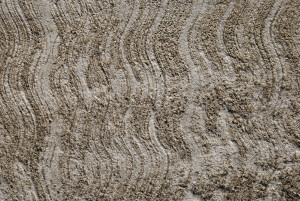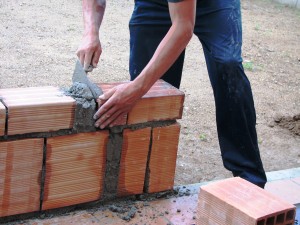Continuing our series on which shed foundation to use, this time we will focus on concrete pads and foundations. Many times, having concrete poured is unnecessary, and only serves to complicate matters and adds a tremendous amount of cost to a new shed project. In some circumstances, however, a homeowner will be best served by having a concrete pad or foundation installed, and we will go over those specific circumstances in this article.
I’ve heard it asked, that if concrete is the strongest, and longest-lasting foundation, shouldn’t it be the foundation material of choice? The short answer is that most people would be better served by using a wooden foundation, or wooden floor in their new shed, simply because concrete would be overkill, and it would vastly outlast the shed it was pored for. Also, concrete attracts and holds lots of moisture, which can cause rust and rot on the items that are stored inside of the shed. With a wooden floor, you eliminate those concerns because the floor breathes, and doesn’t hold moisture, resulting in a very dry storage environment. Concrete is also very costly, and the benefits of having such a long-lasting floor are generally outweighed by the cost and hassle of the installation.
If you are using your new shed as storage for items that will be dripping wet a lot, or if you’re going to be driving very heavy equipment in-and-out of the shed on a regular basis, then a concrete pad will probably be a great idea for your shed. Concrete pads are really your only option if you’re going to be using chemicals and solvents in your shed,

Cement floors can have many surface options, but we strongly recommend a rough one because otherwise the surface can be too slippery.
as they might destroy a wooden floor in short order. If you’re planning on doing a lot automotive work in your shed, you should probably opt for a concrete floor because the automotive fluids would be harmful to the wooden floor, and you would want the smooth finish of concrete to allow you to clean up spills and dirt more easily.
Some people have our sheds built for use as pool houses, or for storage of aquatic items, and for those uses, a concrete pad is the best choice. Even though you could choose to use a pressure-treated floor in your shed, I prefer concrete because you have the option of tapering the floor toward a floor drain to allow the water that drips off of your pool items and clothing to run off and away from your shed, rather than allow it to linger inside, and possibly cause mold or mildew problems in the future. If you’re intentions are to use your shed as a pool house, be sure to install plenty of ventilation in the shed, otherwise you’ll have moisture problems.
There is also the permanence of concrete to consider. Many times, people build sheds that are too small for their uses 10 years down the road, and many times sheds are added on to, or moved to a new location. Wooden floors are easy to add on to and are very simple to modify to suit their owner’s new ideas of what they need out of their shed. A concrete shed floor is very difficult to add on to, and requires extensive planning and cost to accomplish it, and typically the addition doesn’t tend to stay level with the original floor.
In all, a concrete or cement shed floor works for some situations, but for the majority of cases, they tend to be far too expensive and too much hassle to use. Most people are better suited by a wooden floor. You will most likely be happier with a wooden shed floor, and will enjoy the ease it provides, as well as the cost savings, flexibility, and simplicity.


Recent Comments